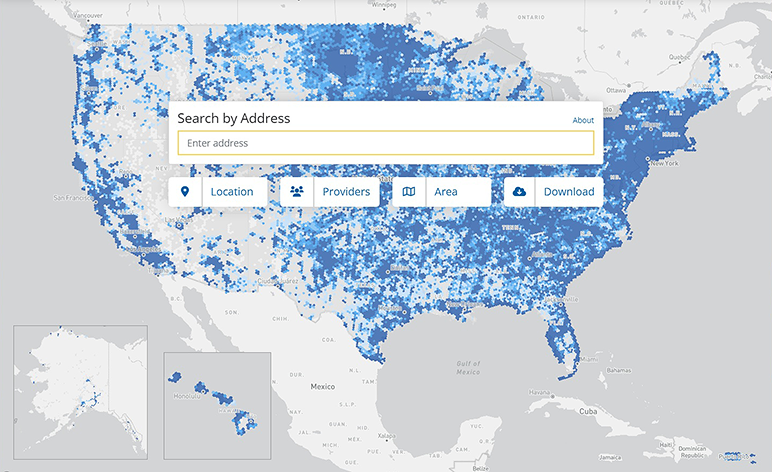'... they know it's not right': Revamped FCC map may kill efforts to get broadband locally
Officials in Escambia and Santa Rosa counties are calling on residents to check the accuracy of a new federal broadband map that will play a key role in distributing more than $42 billion in federal funding for broadband internet infrastructure.
The Federal Communications Commission released a new interactive map of broadband availability last month that lists the availability of internet access for every address in the United States.
Previous versions of the map showed limited availability in the rural areas of Escambia and Santa Rosa counties, but the latest map includes satellite internet providers like HughesNet and Starlink, which give the impression on the map that the area is 100% served with high-speed broadband.
Escambia County Commissioner Robert Bender said Thursday the map is not accurate.

Escambia tries againAfter Cox protests selection process, Escambia re-soliciting rural broadband project
Better, faster, stronger?Better, faster, stronger? Santa Rosa making plans to improve internet access
"It shows there's service where there's not, but we need your help to make sure that the FCC knows that their map is not right," Bender said. "Sidenote: they know. Even the providers know it's not right. But we have to let them know, that we know, that they know it's not right."
The federal government defines broadband internet speeds as 25 Mbps download and 3 Mbps upload.
Escambia and Santa Rosa counties, along with the state of Florida, have sent out announcements calling on residents to check their address on the map and if any information is inaccurate, to challenge the information using a tool provided on the FCC website.
Kyle Holley, community liaison for grants and special projects at Santa Rosa County, told the News Journal that there is an urgency to provide as much accurate information to the FCC as possible as the deadline to challenge the map is Friday.
"All of us are asking local residents to please go on that FCC site and enter their address. They should just do it to find out what their speeds are and what their choices are anyways," Holley said. "But what we're really looking for is pushback on if the actual speeds that they have from their service provider are lower than what has been reported by those internet service providers to the FCC."
The National Telecommunications and Information Administration will use the FCC map as part of its formula to distribute $42.45 billion in federal funds to states and territories. The agency is expected to announce how it will distribute the funds in June.
Both counties plan to apply for state grants to bring broadband availability to underserved areas.
Escambia County is seeking to partner with an internet provider to bring broadband to the county's northern end. The county had to issue a re-solicitation last month after commissioners selected the Escambia River Electric Co-operative for the project and Cox Communications filed a protest over the selection process.
Holley said Santa Rosa County is as far into the process as Escambia County but has been following the recommended procedures from the Florida Office of Broadband to develop its projects. Holley said the county is looking at six separate areas to seek grants to build broadband access in mostly low-density areas of the county.
Holley said citizen feedback on this FCC map is one of the only ways individuals will have an impact on where those funds go by providing accurate information to the FCC.
"So in some ways, it is the FCC asking individuals to hold the internet service providers accountable," Holley said. "So it is empowering to the individual. The maps are derived from the highest advertised speeds, as reported by the internet service providers."
Santa Rosa County will host an open house to assist people in challenging the map Tuesday at the Santa Rosa County Extension Office from 5:30 p.m. to 7 p.m.
Holley said it's crucial to reach people in underserved areas without internet access.
"We're going to have to do some old-school stuff," Holley said. "We're making flyers and going to all the convenience stores, and I'm going to talk to all the folks running the cash registers, and I'm going to all of the little country stores. We've got to really hit the streets."
Holley said the map might show satellite internet service providers offering high speeds in rural areas, but if no one can afford to purchase those services, then the reality is the area is underserved.
"If individuals go on and self-report, it will help the state to identify unserved and underserved people. And then the state, who's going to dole out the federal money when it comes, they are going to write grant programs that prioritize unserved and underserved people," Holley said. "So, if people in Escambia County and Santa Rosa don't report, we could look like we have coverages in areas where we just don't."
The map is available to view online at broadbandmap.fcc.gov/home.
This article originally appeared on Pensacola News Journal: FCC broadband map shows 100% coverage in Escambia and Santa Rosa

